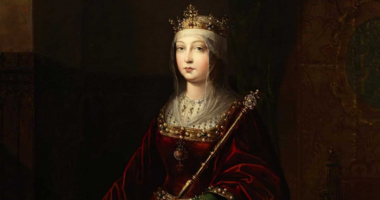Top 6 Interesting Facts about Jacques Cartier
One of history's most well-known explorers is Jacques Cartier. The North American navigator, who was of French descent, made important discoveries there and ... read more...was the first to claim Canada for France. Here are six interesting facts about Jacques Cartier's life and scientific breakthroughs.
-
The early years of Jacques Cartier are extremely scantily recorded. He most likely started out working in commerce and navigation. Like his fellow Frenchmen, Cartier most likely traveled the South American coast of Brazil while at sea, first as a sailor and then as an officer. Following the conquest of Brittany by the French, King François I replaced the explorer Giovanni da Verrazano with Jacques Cartier.
In December 1491, Jacques Cartier was born in Brittany not far from St. Malo. In the village of Dieppe in northern France, he studied navigation. Before finally being given a commission by the king, he spent a significant portion of his adult life developing his reputation as a skilled navigator. Cartier, an expert navigator by this time, significantly elevated his social standing in 1520 by weding Mary Catherine des Granche, a member of a prominent local family.
The mission of Jacques Cartier's first trip was to look for a route to the Pacific Ocean near Newfoundland and perhaps uncover some rich metals which is one of the interesting facts about Jacques Cartier. On April 20, 1534, he sailed from Saint-Malo in two ships and 61 men. Cartier traveled to a number of locations that were well-known to European fishermen. He gave these locations new names or added them to his maps. Following Anticosti Island's coastline and again traversing the Strait of Belle Isle, they made their way back to France.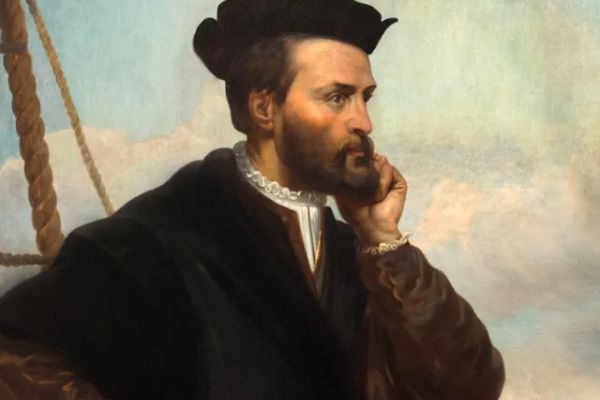
Photo: Curieuses Histoires 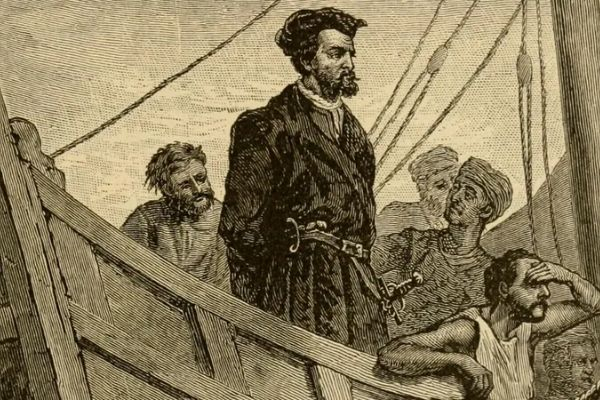
Photo: Encyclopedia Britannica -
King Francis I of France chose Jacques Cartier to embark on an expedition to investigate the Eastern Coast of North America following a number of prestigious recommendations, including one from Giovanni da Verrazzano. This is a highly significant truth about Jacques Cartier that changed his life. He had participated in numerous successful excursions in the past, and it is said that the King chose him for this mission as a result. The mission of the expedition was to find gold among other treasures, as well as to attempt to locate a safe route to Asia.
Leaving Saint-Malo on April 20, 1534. Jacques Cartier's voyage, which lasted around 20 days and involved two ships and 61 men, was mainly successful. Along with discovering Prince Edward Island and the Gulf of Saint Lawrence, the men also explored Newfoundland.
The mission of Jacques Cartier's first trip was to look for a route to the Pacific Ocean near Newfoundland and perhaps uncover some rich metals. He gave these locations new names or added them to his maps. On June 26, Cartier and his ships circumnavigated Newfoundland's north shore before sailing south through the Strait of Belle Isle and hugging the Magdalen Islands' coastline. They arrived at what are now the provinces of Prince Edward Island and New Brunswick three days later. Then, as he made his way westward, he crossed Chaleur Bay and arrived at Gaspé, where he came upon Iroquoian natives from the province of Quebec. They were there for their yearly seal hunt. On July 25, Cartier's ships sailed away following the planting of a cross and some trading and talks. Cartier kidnapped two of Donnacona's sons, an Iroquoian chief before he left. Following Anticosti Island's coastline and again traversing the Strait of Belle Isle, they made their way back to France.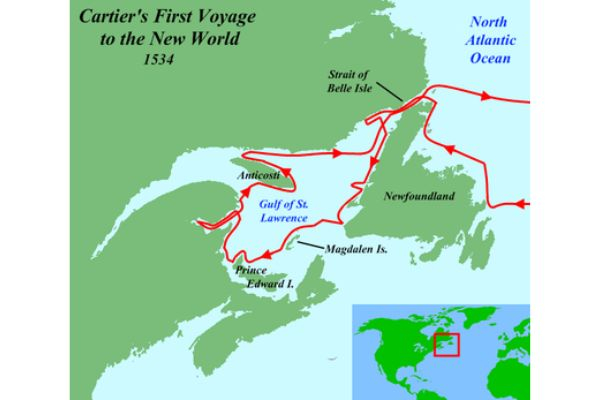
Photo: Wikipedia Video: TIMELINE -
King Francis I dispatched Jacques Cartier on a second expedition after learning that his mission had been a success, this time with three ships and 110 men. This time, Cornier traveled up the St. Lawrence River, which had never been visited by a European before, further north. He eventually made it to Stadacona, the Iroquoian capital. The inhabitants of what is now known as Montreal, Quebec, welcomed him with open arms when he arrived there on his tiniest ship. He never went any further because the rapids in the river prevented him from going any further.
The Grande Hermine (the Great Stoat), the Petite Hermine (the Lesser Stoat), and the Émérillon were the names of the three vessels (the Merlin). River navigation has been made possible with the Émérillonhad. They departed from Brittany at the middle of May 1535, and it took them 50 days to get to Newfoundland. They crossed the Gulf and proceeded upstream on the "Canada River" (eventually known as the St. Lawrence River), following the same route as the previous year. The French chose to spend the winter there and made their home at the mouth of the St. Charles River given the scope of their intended excursions. Jacques Cartier opted to keep sailing up the river toward Hochelaga, which is now Montreal, against the advice of chief Donnacona. Hochelaga was reached by Cartier on October 2, 1535. Other Iroquoian people he encountered there intrigued Cartier with the idea of a sea in the heart of the nation. Relations with the indigenous population in Stadacona (Quebec) had worsened by the time Cartier returned.
The harsh Canadian winters caught the French fleet off guard on its second journey, and they also had to deal with an outbreak of scurvy. After escaping this, Cartier and his crew spent the next 14 months traveling back to France. Many people consider his second journey to be the best of his three which is one of the interesting facts about Jacques Cartier.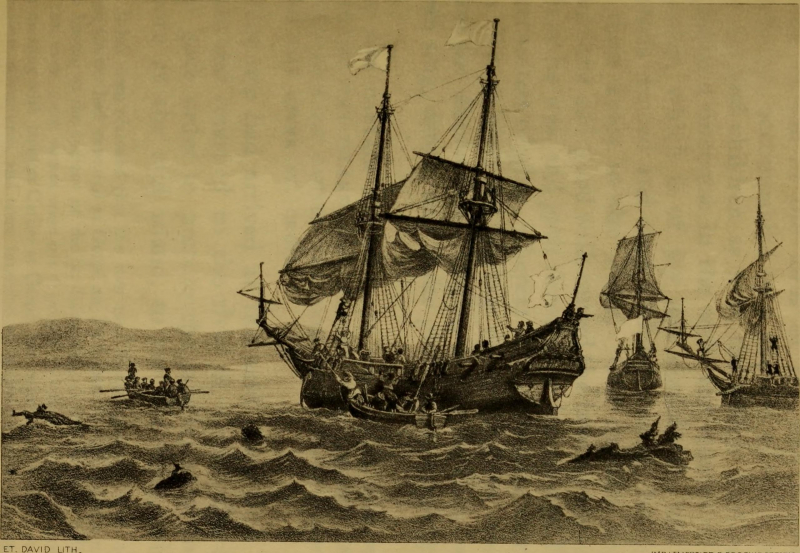
Photo: Wikimedia Commons Video: The World of Audiobooks -
Following a conflict in Europe, King Francis I desired to establish a colony in Canada and was in a direct struggle with Spain over the territory. In 1541, he dispatched a third expedition to the nation, this one under the command of Jean-François de La Rocque de Roberval. Then Roberval appointed Jacques Cartier a subaltern. Cartier departed first; Roberval would not do so until a year later.
He made another trip to Montreal, but the rapids prevented him from continuing any further. Their second winter in Canada turned out to be just as challenging as their first, and it was made more challenging by deteriorating ties with the locals.
Nearly 800 people were expected to participate in this mission, which was intended to be a significant colonization effort. While the logistics and colonial management of the trip fell under the purview of Jean-François de La Rocque, sieur de Roberval, the explorations were left to Jacques Cartier. A senior military officer named Roberval was in charge of recruiting, arming the ships with weaponry, and bringing on craftsmen and several convicts. Only half of the crew, under the leadership of Cartier, were despatched to Canada by Roberval in May 1541, just before the expedition was scheduled to start because of preparation delays and the whims of the Spanish War. The following year saw the arrival of Roberval. At the meeting of the Cap Rouge and St. Lawrence rivers, many kilometers upstream of Quebec, Cartier and his men found a new colony.
After finding what they thought to be gold and diamonds, Cartier and his crew left for France. But when they discovered that they were iron pyrites and quartz crystals, they were dissatisfied. The identical result would occur in Roberval as it did in Cartier. The fact that Jacques Cartier's third expedition was unsuccessful is not widely known.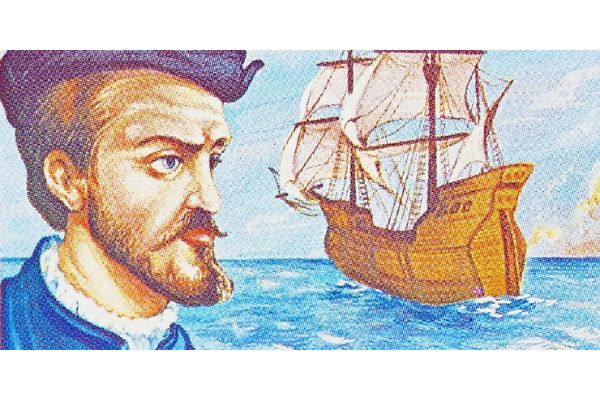
Photo: World Atlas Video: The Other States of America History Podcast -
One of the interesting facts about Jacques Cartier is that he is credited with naming Canada. The path to Kanata, as described to French explorer Jacques Cartier in 1535, was really the settlement of Stadacona, the location of the modern city of Québec. For lack of a better name, Cartier referred to the hamlet and the territory ruled by its ruler, Donnacona, as "Canada."
The name was soon used to refer to a considerably greater area; maps from 1547 identified Canada as the country extending north of the St. Lawrence River. The St. Lawrence River was also referred to as the "rivière du Canada" by Cartier, a term that persisted until the early 1600s. The territory along the great river of Canada and the Gulf of St. Lawrence was still referred to as Canada in 1616, even though the entire region was known as New France.
The region now known as Canada quickly expanded as a result of the exploration and commerce of furs. The term applied to all French territories in what is now the American Midwest and as far south as present-day Louisiana in the early 1700s.
In 1791, when the Province of Quebec was split into the colonies of Upper Canada and Lower Canada, the term "Canada" was first used as an official name. The two colonies were combined in 1841 to become the Province of Canada. The rest of the nation wouldn't start using the term until some time later, in 1867.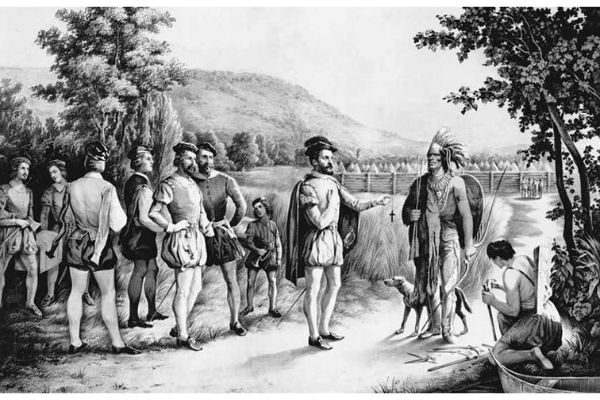
Photo: CANADIANA web series Video: HISTORY -
Jacques Cartier's explorations led to his becoming the first European to map and navigate the St. Lawrence River in what is now Quebec, Canada. Despite some claims to the contrary, Cartier did have a role in the discovery of Canada by being the first European to reach the country's interior east along the St. Lawrence River.
Cartier was given the task of exploring the northern American continent in 1534 by King Francis I of France in pursuit of treasure and the legendary Northwest Passage to Asia. Cartier crossed the Strait of Belle Isle to access the Gulf of St. Lawrence that year. He then traveled down Newfoundland's west coast to Cape Anguille after briefly exploring the region's desolate north coast. From there, he set out on a voyage that took him through the Magdalen and Prince Edward islands, via Chaleur Bay, and to Quebec's Gaspe Peninsula, which he claimed for France. He next discovered the St. Lawrence River's inlet, traveled up the coast to Anticosti Island, and then headed back to Europe.
Francis I sent Cartier on a second journey in 1535 as a result of his discovery of the warm and fruitful territories surrounding the Gulf of St. Lawrence, which were previously regarded to be a barren and hostile region. He traveled up the St. Lawrence to the Hochelaga native town, which is now the location of Montreal. He investigated Cabot Strait along Newfoundland's southern coast on his way back to France. A final trip to the area was made by Cartier in 1541 as part of an unsuccessful colonization attempt. His vast geographic research served as the foundation for France's 17th-century claims to the productive St. Lawrence Valley.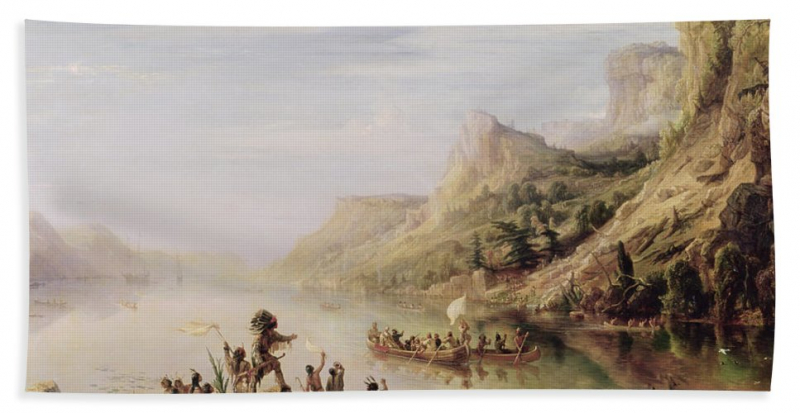
Photo: Fine Art America Video: History and Headlines


























